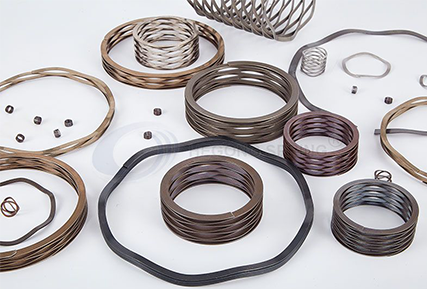May. 23, 2024
Hardware
A wave washer, also known as a wave spring washer or wave compression washer, is a type of washer that provides axial load or spring action to fasteners. It is commonly used in various applications to maintain tension and prevent loosening or leakage. Installing a wave washer is a straightforward process, and by following a few simple steps, you can ensure a proper installation.

Before you begin, gather the tools and materials needed for the installation. These typically include the wave washer itself, the fastener (such as a bolt or screw), and any other required tools, such as a wrench or screwdriver.
Ensure that the surfaces where the wave washer will be installed are clean and free of debris. Remove any dirt, rust, or old washer remnants from the mating surfaces to ensure a secure and proper fit.
Take the wave washer and place it on the mating surface. The wave washer is designed to fit between the head of the fastener and the surface it will be tightened against. Ensure that the waves of the washer are facing the surface and not the fastener.
Next, align the fastener (bolt or screw) with the wave washer. Insert the fastener through the center hole of the washer and align it with the corresponding hole in the mating surface.
Using your hand, begin tightening the fastener clockwise until it is snug against the wave washer and the mating surface. At this point, the wave washer should be compressed slightly. Ensure that the fastener is properly aligned and centered in the hole.
To fully secure the fastener and wave washer in place, use the appropriate tool, such as a wrench or screwdriver, to apply the final tightening force. Carefully tighten the fastener in a clockwise direction until it reaches the desired level of torque specified for your application. Be cautious not to overtighten, as it may cause damage to the wave washer or the mating surfaces.
Once the fastener is tightened, verify that the wave washer is properly compressed. The waves of the washer should be flattened or partially flattened, indicating that the washer is providing the desired axial load or spring action. Ensure that the fastener remains secure and does not loosen after tightening.
After installation, perform a functionality check to ensure that the wave washer is effectively maintaining tension and preventing loosening or leakage. Test the assembly by applying forces or vibrations that it may encounter during its intended use. Verify that the fastener remains tight and the wave washer continues to provide the desired spring action.
Note: It's important to refer to the manufacturer's instructions or guidelines specific to the wave washer you are installing. Different wave washers may have variations in design, size, and installation requirements. Always follow the recommended installation procedures provided by the manufacturer.
By following these steps, you can successfully install a wave washer and ensure its proper functionality in your application. Remember to use appropriate tools, maintain cleanliness of the mating surfaces, and apply the correct amount of torque to achieve the desired tension and compression provided by the wave washer.
For more information, please contact us. We will provide professional answers.
Previous: What are the issues with post-tensioning?
Next: FAQs on plastics
If you are interested in sending in a Guest Blogger Submission,welcome to write for us!
All Comments ( 0 )